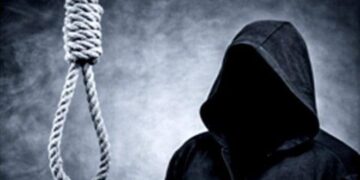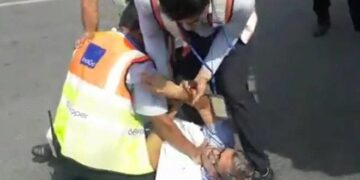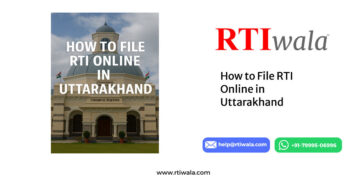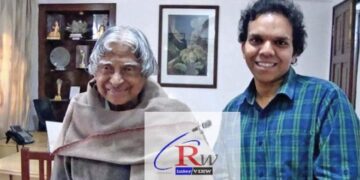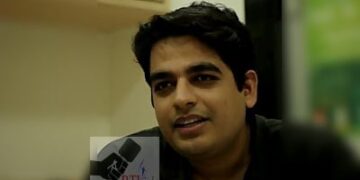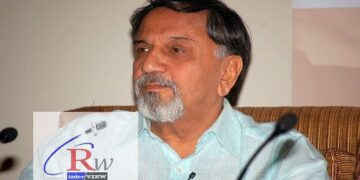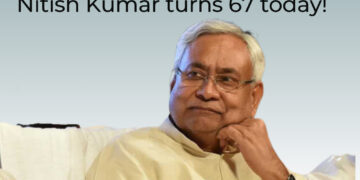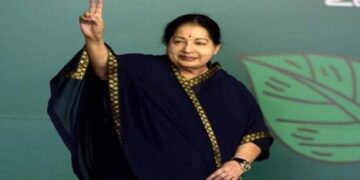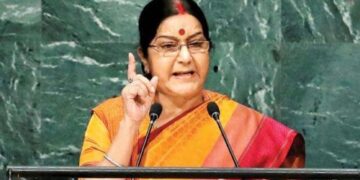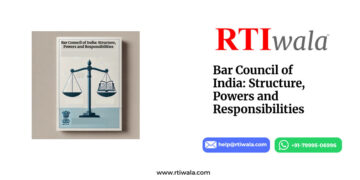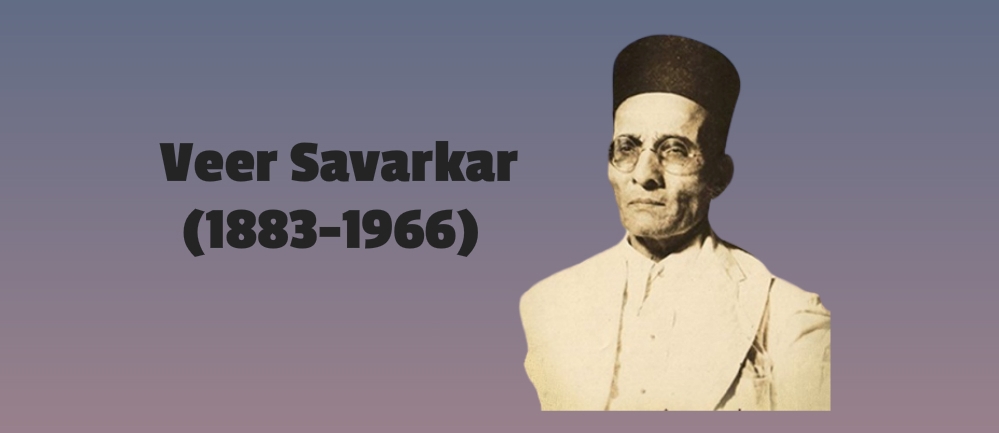Who was Damodar Savarkar?
Vinayak Damodar Savarkar was born on May 28, 1883, at Bhagur in the Nashik District of Bombay, India. He was born in a Marathi Chitpavan Brahmin Hindu family and spent his childhood with his siblings, Ganesh, Mainabai, and Narayan. And completed his graduation at ‘Fergusson College’ in Pune. Later he was offered a scholarship to study law in England. He was subsequently praised for his bravery, in his town by neighbors which earned him the nickname ‘Veer’.

What should you know about Vinayak Damodar Savarkar?
Savarkar was a lawyer by profession and a writer of ‘Mazi Janmathep,’ ‘Kamala,’ and ‘The Indian War of Independence.’ Most of his writings are inspired by the time he had spent in prison, also just before his death. An article called ‘Atmahatya Nahi Atmaarpan’ was written during fast until death (atmaarpan) and he said that one should be allowed to end his or her life when one’s main objective of life is achieved.
Also Read: Mahadev Govind Ranade: The Unsung Fighter
Some interesting facts about Vinayak Damodar Savarkar
1] Creator of Hindu Mahasabha
Vinayak Damodar Savarkar, prominent creator of ‘Hindu Mahasabha’. The term ‘Hindutva,’ was popularized by Savarkar through one of his works in 1921. In 1937, he became the president of the ‘Hindu Mahasabha.’
2] Writer of a book Kale Paani
He wrote ‘Kale Pani’ that narrates the struggles of Indian Independence activists in the infamous cellular jail of Andaman and Nicobar islands.
3] A protestor till last breath!
In 1966, on 1st February Savarkar declared that he went for a fast until death and termed the act as ‘atmaarpan’. He later even renounced medicines, which ultimately caused his death on February 26, 1966.
4] A Revolutionary since teenage
Savarkar founded a youth group and named it ‘Mitra Mela’. It was meant to coordinate revolutionary activities.
5] Follower of Bal Gangadhar and Lala Lajpat Rai
Radical political leaders like Lala Lajpat Rai, Bal Gangadhar Tilak, and Bipin Chandra Pal remains his inspirations. Also in London Savarkar inspired his fellow Indian students and formed an organization called ‘Free India Society’, which encouraged Indians to fight for complete freedom from the British. He came up with a book titled ‘The History of the War of Indian Independence’, which was an inspiration for Indians to fight for their freedom. Though the British banned the book it attained great popularity in many countries. Savarkar also worked on a manual on making bombs and guerrilla warfare and distributed among his friends.
6] A tutor for prisoners
Savarkar used his time in jail by teaching some of his fellow prisoners to read and write. He also obtained permission from the government to begin a basic library in prison.
Also Read: Everything you should know about Dr. Shanti Swaroop Bhatnagar
7] Initiated the concept of ‘Akhand Bharat’(UNITED INDIA)
During his time in prison, he wrote an ideological pamphlet called ‘Hindutva: Who is a Hindu?’ This work was smuggled out of prison and was subsequently published by Savarkar’s supporters ‘Hindutva’.

8] Protested for protection of Heritage of India
On January 6, 1924, Savarkar got a released from jail, after which he played an essential role in the creation of ‘Ratnagiri Hindu Sabha’, which aimed at preserving the social and cultural heritage of the Hindus.
9] A Socialist
He also acted against some of India’s social evils, such as caste discrimination and untouchability that were prevalent during his time.
10] A biopic movie “Kalapani”
Actor Annu Kapoor portrayed Vinayak Savarkar role in a Malayalam-Tamil bilingual film titled ‘Kaalapani in 1996. In 2001, Savarkar’s biopic titled ‘Veer Savarkar’ got released after being in production for many years. Actor Shailendra Gaur represented Savarkar. In 2003, the Indian Parliament honored Savarkar by unveiling his portrait.


